Artist Profile: Will Barnet
Swann Galleries’ September 21, 2023, American Art sale features a special section of approximately 30 works by Will Barnet from the artist’s estate.
A Career That Spans Decades
Barnet spent the majority of his career in New York, from the time of his arrival as a young student to his residency at the National Arts Club in Gramercy, only a few blocks from Swann Galleries. Barnet became a fixture in the New York art scene and still visited galleries and artists’ exhibitions until his death at 101 in 2012. Barnet was a contemporary to Arshile Gorky, Marsden Hartley, Riva Helfond, Jasper Johns, Yasuo Kuniyoshi, and Jackson Pollock, and a respected art instructor (among his students were Robert Blackburn, Donald Judd, Alex Katz, James Rosenquist, Mark Rothko, and Cy Twombly). Among several honors, including the 2011 prestigious National Medal of Arts, and the French insignia of Chevalier of the Order of Arts and Letters in 2012, Barnet was awarded the National Arts Club Gold Medal of Honor in 1990, after the start of his residency at the Club in 1982. Members of the Club have included other esteemed American artists including Robert Henri, Frederic Remington, William Merritt Chase, Paul Manship, and Alfred Stieglitz.
Barnet’s career spanned several decades, and with them, art movements. While for the most part remaining a representational artist, he imbued some elements of abstraction through his minimalist approach to creating elegant and dreamlike compositions. In his works, the familiar becomes all the more intriguing with Barnet’s great sense of narrative. What remained consistent in his work throughout his long career was his ability to convey complex relationships and ideas with great clarity; all elements in the composition are deliberately placed. Many of the Barnet offerings in the September 2023 sale are studies for later paintings, prints, or both. According to Barnet, who became one of the most influential printmakers in his time, there is no hierarchy of media and one work was not a mere byproduct of the other, but a continued dialogue, sometimes spanning years. For his 1998 retrospective of prints organized by The Southern Alleghenies Museum of Art, Loretto, Pennsylvania, Barnet stated, “There is a consistency between all the decades of my work, despite different themes, settings, and plastic expressions.”
Barnet in the 1930s
Prior to coming to New York City in 1930 with a scholarship to attend the Art Students League, Barnet studied at the conservative Boston Museum School. Far less traditional and academic than the Boston institution, the Art Students League was an environment of experimentation and gave the young artists freedom to pursue their own paths. Barnet counted Stuart Davis and Charles Locke as two of his early mentors who showed the young artist new styles and media, including, most notably, printmaking. It was during this early period that Barnet’s compassion and warmth towards his subjects came to the forefront. Barnet’s work for the Works Progress Administration showed his subjects, the city’s downtrodden, with dignity, hopefulness and determination. While Barnet’s work of the 1930s focused on others’ quotidian dramas, the outbreak of World War II spurred a period of looking inward. Perhaps turning to more intimate subjects of his young family acted as a cocoon against the War’s atrocities, or an effort to recapture the humanity of his earlier works.
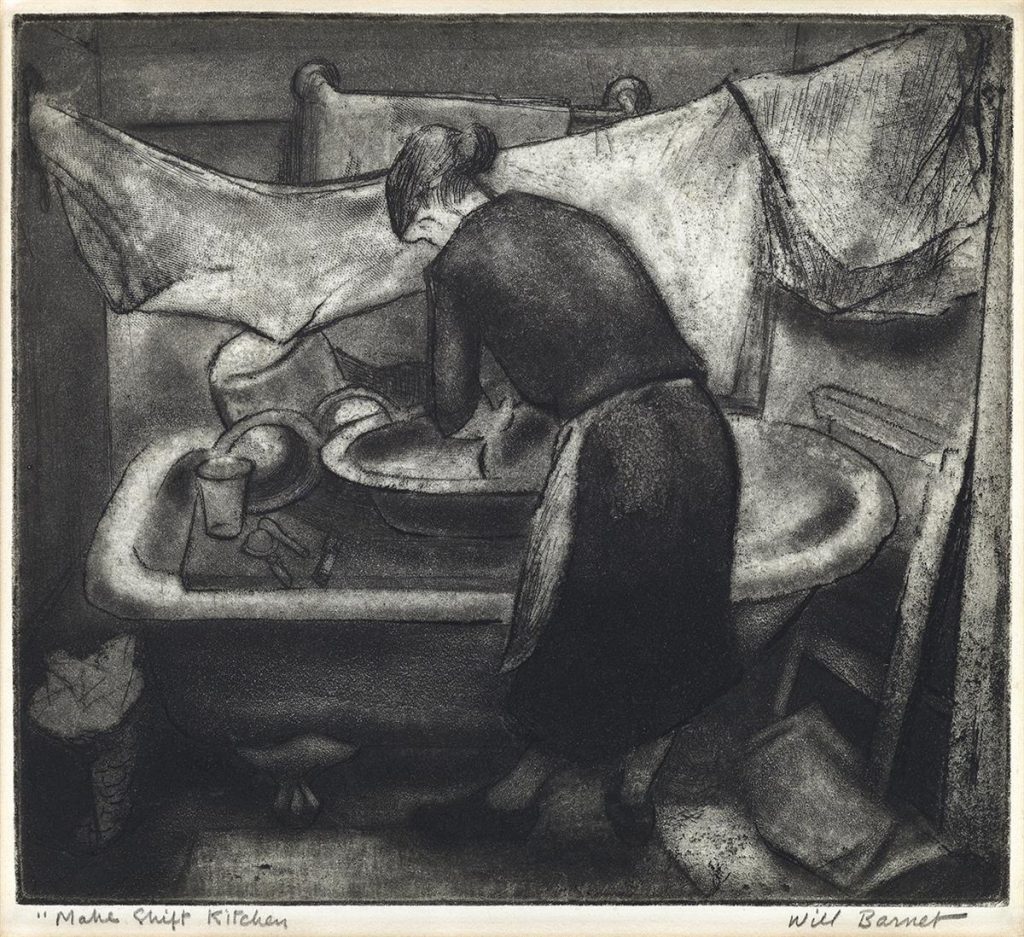
1960s Works
Many of the Barnet works in our September 21, 2023 sale date from the 1960s into his late career and continue to explore the artist’s family narrative and vignettes of intimate relationships. As an older man, Barnet sought out the common connection between generations, and his daughter Ona and grandson Will (Lots: 312, 318, 319) appear frequently in various life stages in these studies. In an interview at Barnet’s studio at the National Arts Club, with art historian James Thomas Flexner, published in Barnet’s 1984 monograph by Robert Doty, Barnet shared that “he considered family relationships fundamental to human existence.”
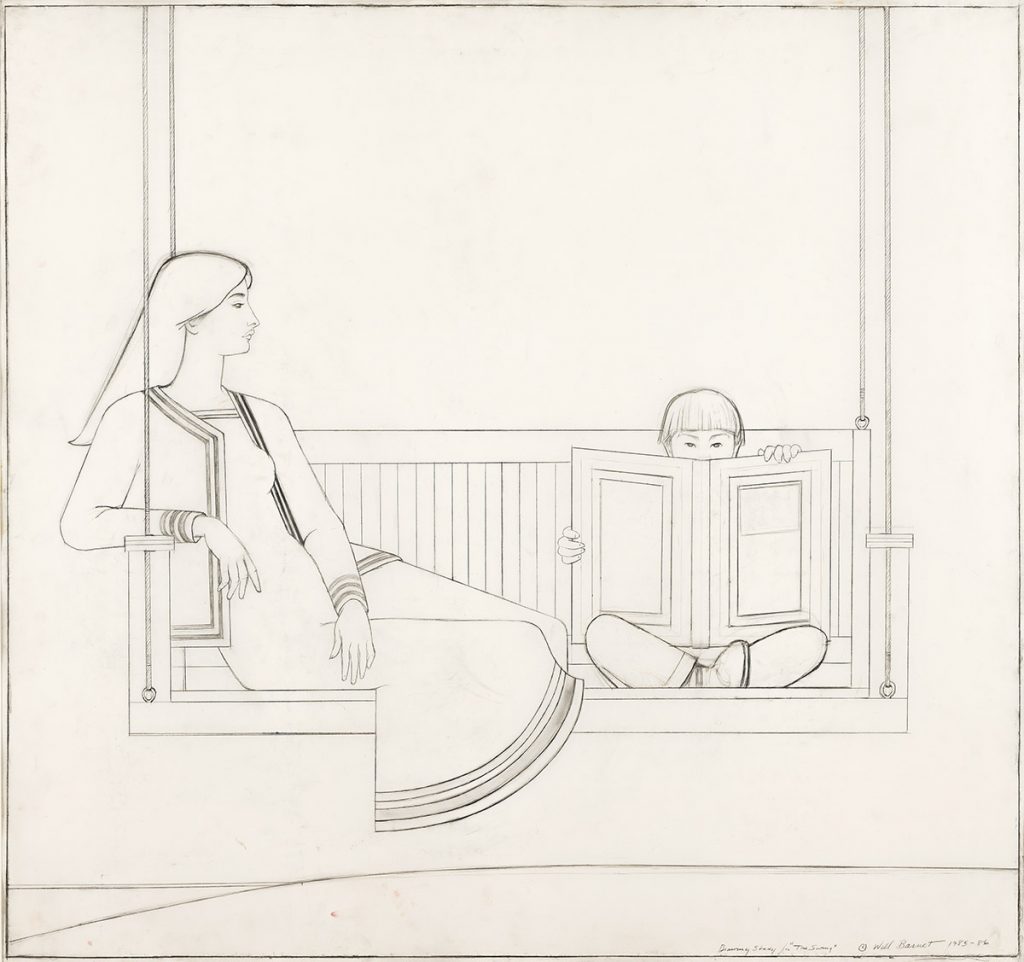
Even if family members appear absent, as in Barnet’s abstract works, they are represented in some form. The cat became a symbol of domesticity, and parrots came to represent his father, who had purchased the birds from returning sailors during Barnet’s childhood in Beverly, Massachusetts. These symbols, part of Barnet’s personal visual vocabulary, appear in several of the works currently being offered. In Study for The Silent Seasons- Winter, a literal thread links Ona to a parrot on the window frame, bridging generations and perhaps imparting ancestral knowledge. A parrot and a cat appear together with Barnet’s sisters in Jeannette and Eva (Two Sisters). Barnet’s iconography is unique to his works, and though the viewer is not always privy to their autobiographical meanings, the symbols establish warmth and familiarity.
1970s Portraits
In his portraiture, Barnet aimed to convey the sitter’s emotional and psychological states. Even in his early sketches of the impoverished New Yorkers in Central Park, his subjects were more than figures filling a page; he considered them complex people impacted by time and their environment. In Barnet’s 1970 Portrait of Professor Walter Gellhorn, in the collection of Columbia University, the study of which is being offered in our sale, the artist did not strive for the most accurate physical likeness, but he was more concerned with Gellhorn’s inner life. The portrait of Katharine Kuh, Homage to Léger with K. K, shows the gallerist’s acumen and discerning eye, rather than every detail of her face. Each sitter, Gellhorn, Kuh, and Ona in Study for the Silent Seasons, exist against a structured, flattened background. Though simple, these backgrounds are almost as biographical as the portraits, as everything is interconnected in Barnet’s art.
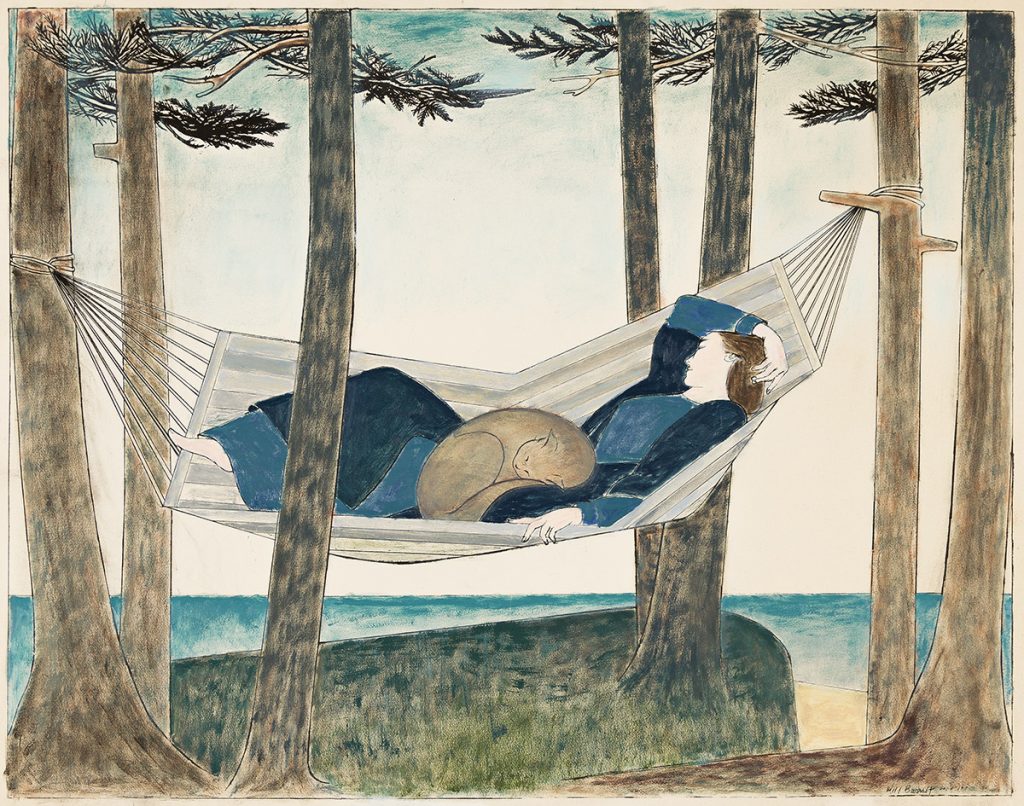
The intertwining of human and environment evolved into Barnet’s next major theme in his later works- the realm of nature and Transcendentalism. The imaginative works of the 1970s, including Play and Summer Idyll, are Barnet’s visions of tranquil sanctuaries with idealized humans living in nature. Barnet’s fantasies were an extension of his love of myths and legends. In Atalanta, based on the ancient Greek myth, Ona is seen gazing at a golden apple, blending Barnet’s observations of the present with ancient past.
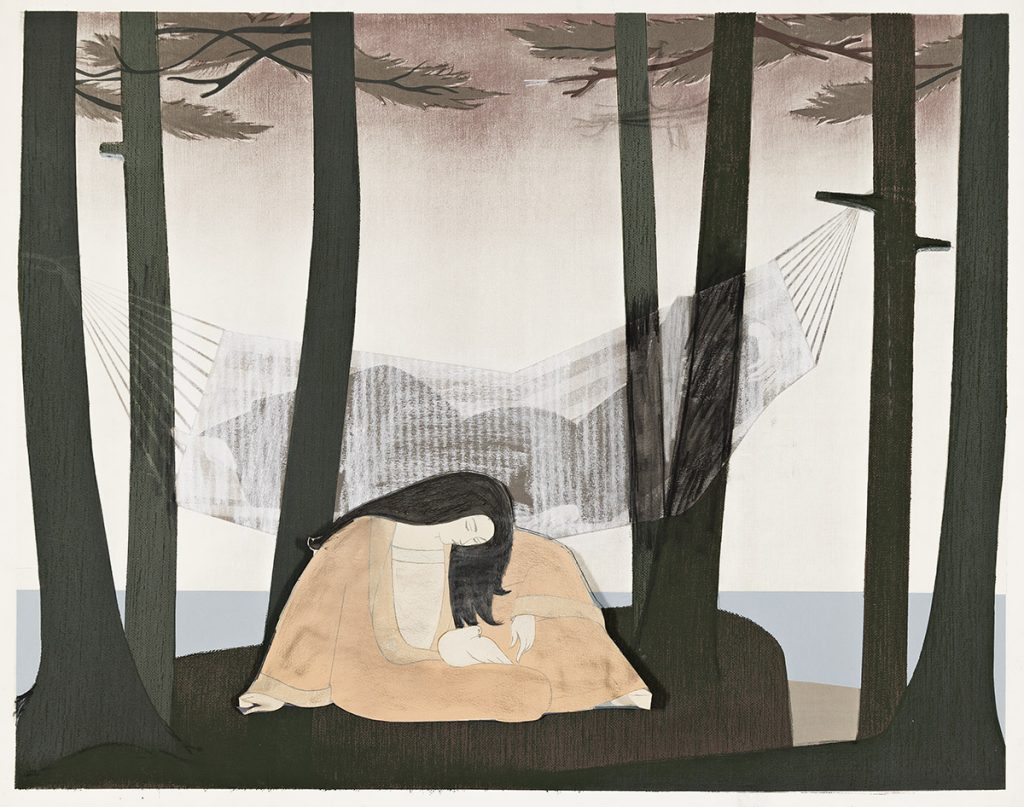
Associations between subjects, their surroundings, dreams, lived experiences, and myths are recurring themes in Barnet’s works and offer continuity through his long artistic career. We are very happy to be able to offer this survey of studies for some of Barnet’s most iconic works of his late career.
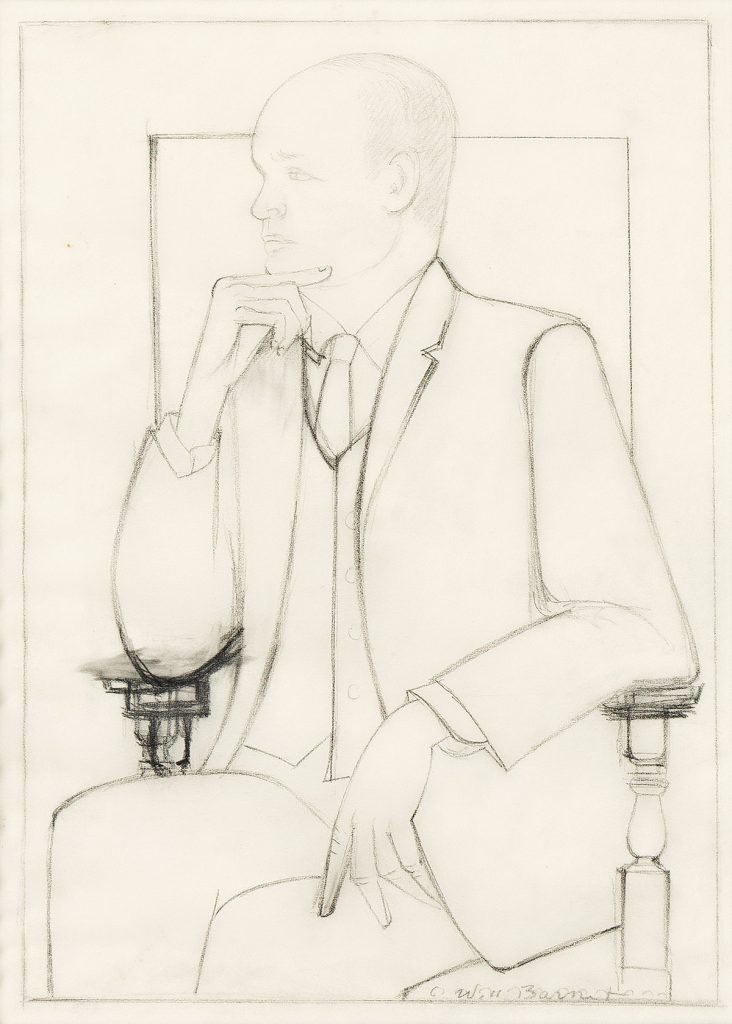
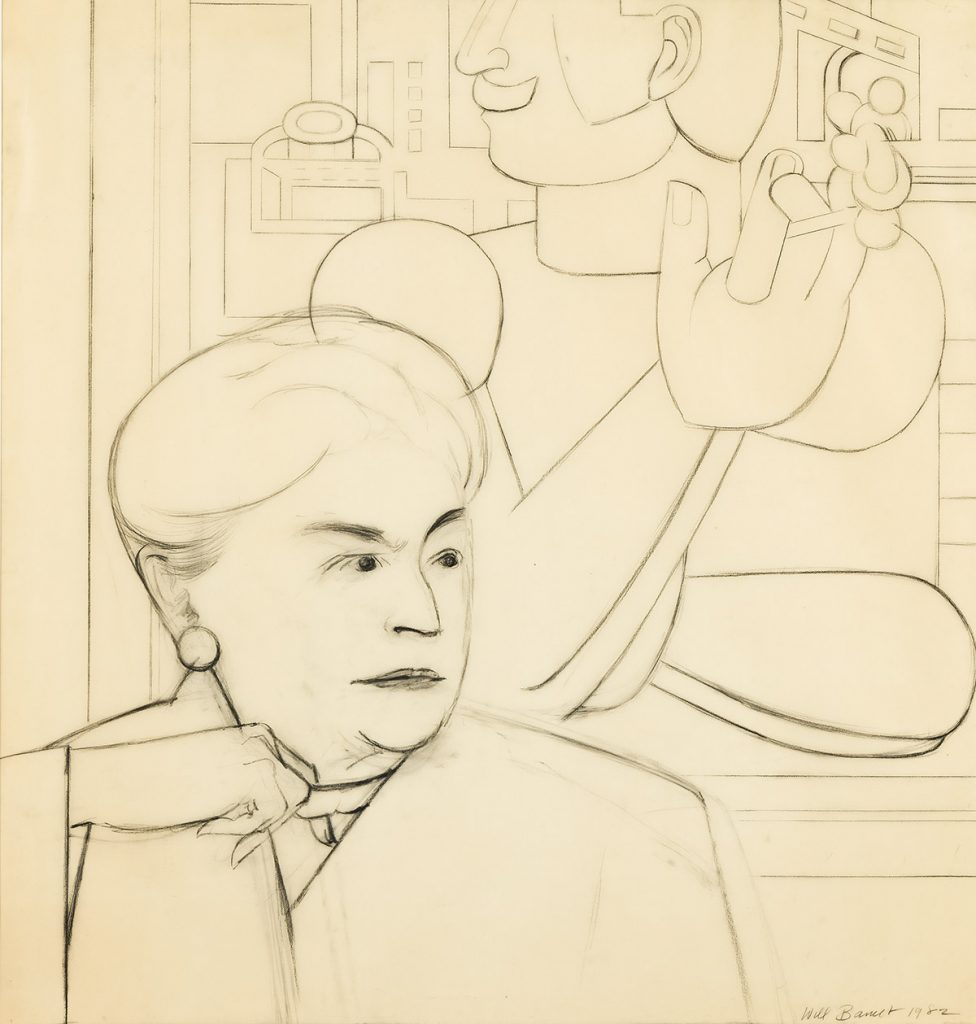
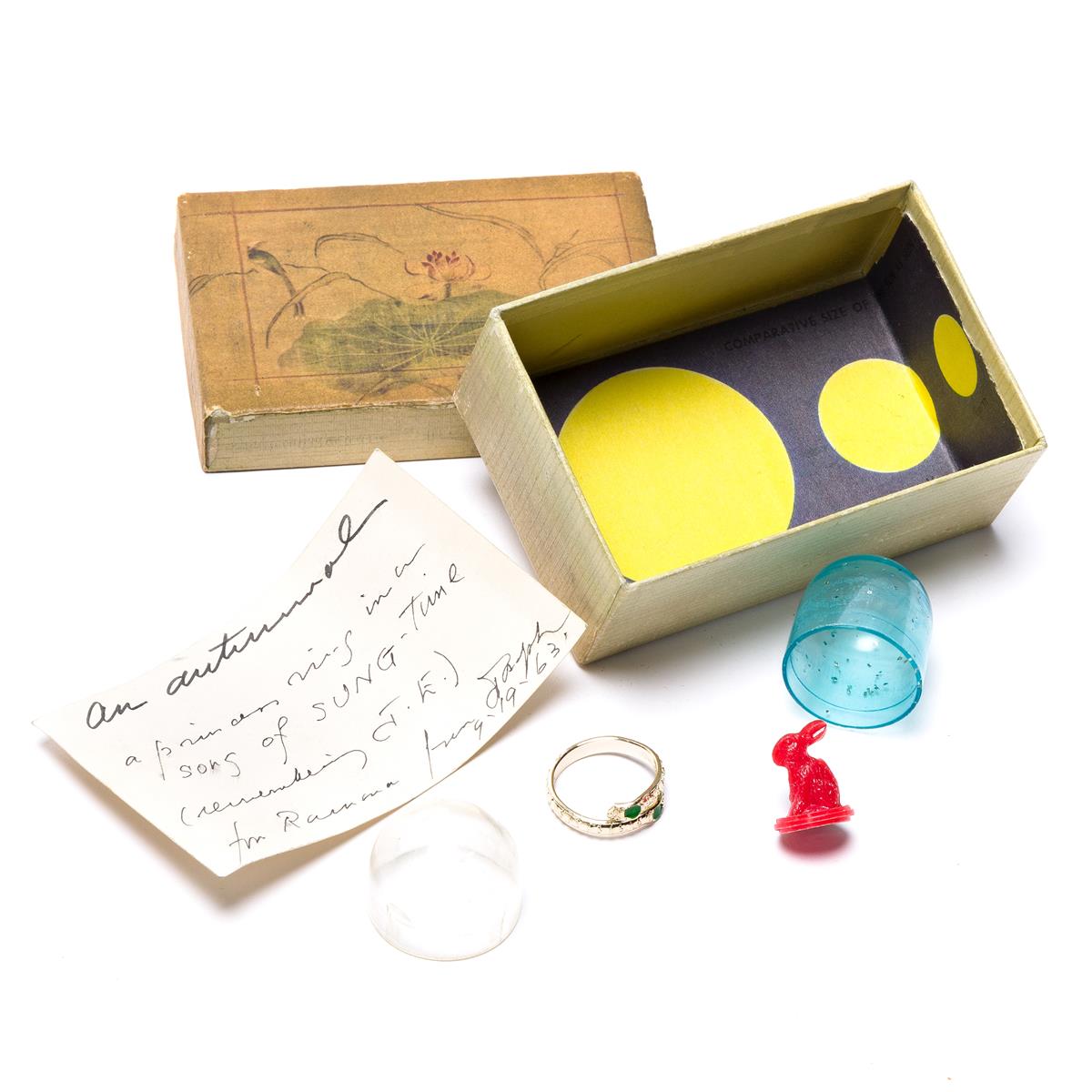









![Grace Meschery-McCormack shares about two copies of Fernando de Rojas’s ‘La Célestine,’ including a limited edition copy illustrated by Pablo Picasso.
At auction April 22. Learn more about the works at the link in our bio.
#Rarebooks #rarebookdealer #antiquarianbooks #auctions
_______________________________________
Music Credit:
Schubert - Piano Quintet in A major ‘The Trout’, D. 667 - IV. Andantino – Allegretto
Music provided by Classical Music Copyright Free on Youtube [https://tinyurl.com/visit-cmcf]
Watch: • Schubert - Piano Quintet in A major ‘...]](https://scontent-iad3-1.cdninstagram.com/v/t51.75761-15/491443494_18499096345036585_5935932878956098058_n.jpg?stp=dst-jpg_e35_tt6&_nc_cat=107&ccb=1-7&_nc_sid=18de74&_nc_ohc=AZ-awqelOZgQ7kNvwFA19hE&_nc_oc=AdkZVODYB5VxTPck7kaEV8QTzHwvQLzaAjo_r9W39mgpTAk2Ix_Bp7bj2bTOpAdxWZY&_nc_zt=23&_nc_ht=scontent-iad3-1.cdninstagram.com&edm=AM6HXa8EAAAA&_nc_gid=RjO-AL8wJB4OsYpWPreXeg&oh=00_AfFe71cdy3TwSfMQhSbjRwO5nQS1iO9djdj-EPTpnGtE0g&oe=680E6091)







